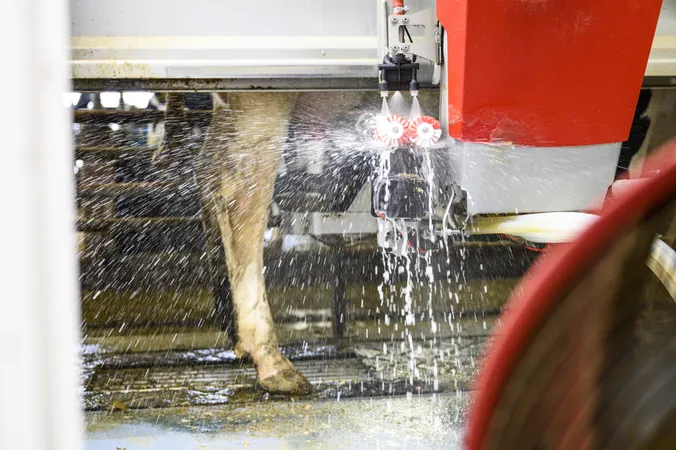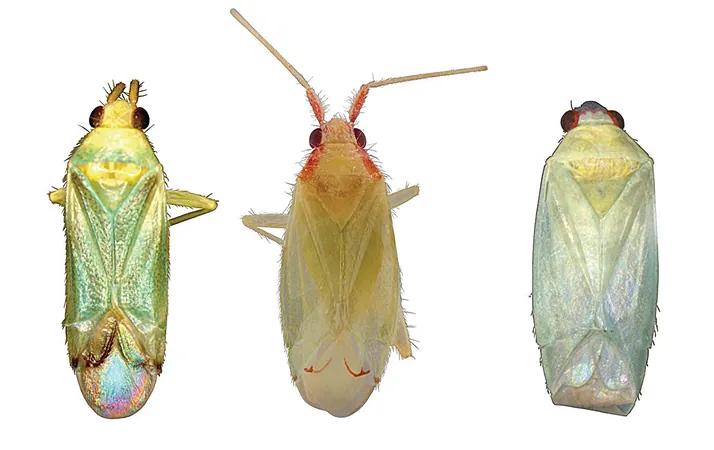
Deadly H5N1 Virus Raises Alarm as Dairy Worker Recovers; What You Need to Know Next!
2024-10-28
Author: Daniel
Recent Research on H5N1 Virus
Recent research has uncovered a strain of the H5N1 avian influenza virus that was isolated from a Texas dairy worker earlier this year. This strain has elicited concern among researchers, as it demonstrated a 100% lethality rate in ferrets during experiments conducted by scientists at the University of Wisconsin–Madison. The ferrets, which are commonly used to study influenza viruses due to their similar physiological traits to humans, contracted the virus airborne, although not very efficiently.
Recovery of the Infected Dairy Worker
Fortunately, the infected dairy worker experienced only mild symptoms, including conjunctivitis, and has made a full recovery. What's more optimistic is that this specific H5N1 strain does not seem to be spreading in the wild, a critical point that alleviates some immediate fears about potential outbreaks.
Pathogenicity and Implications
Yoshihiro Kawaoka, a leading scientist in the study, expressed surprise at the strain's pathogenicity in ferrets, describing it as one of the most lethal viruses he has encountered in his research. The implications of such findings are significant, especially considering the increasing number of H5N1 cases reported among livestock, particularly dairy cattle, throughout North America since early 2024.
Virulence and Transmission Risks
Mutations in the H5N1 virus allow it to adapt to new hosts, with recent strains exhibiting a capacity to jump from birds to mammals. Kawaoka's research revealed that the strain affecting the Texas dairy worker carries a mutation identified in 2001 as a critical factor for severe disease. Thankfully, this particular mutation appears to have waned in circulation, at least in the context of dairy cattle.
Evolutionary Paths of H5N1
There are two distinct evolutionary paths that H5N1 viruses appear to have taken when transitioning from birds to cows. One path led to concerning mutations like those found in the Texas worker, while the other resulted in less dangerous alterations. As Kawaoka explained, the more pathogenic strain has not been detected since, but the risk remains if other circulating variants adapt similarly.
The Mystery of Mild Symptoms
However, the puzzling aspect remains: why did the infected dairy worker not experience severe illness? Kawaoka shares several theories: perhaps pre-existing immunity from exposure to seasonal influenza viruses played a role, or the infection route—the eye rather than the respiratory tract—might be less harmful.
Importance of Monitoring Influenza Cases
Moreover, increased monitoring and reporting of influenza cases in the dairy workforce could mean more mild cases are documented than in the past. Another possibility is that this specific strain of H5N1 behaves less aggressively in humans than in ferrets.
Conclusion and Public Vigilance
As scientists continue to unravel the complexities of this virus, Kawaoka emphasizes the urgency of understanding the dynamics between pathogenicity in ferrets and potential threats to human health. The takeaway for the public? Vigilance in monitoring H5N1 not just in animals but also in humans is crucial as we face a new era of zoonotic viruses. Stay informed, and keep an eye on developments in avian influenza research!





 Brasil (PT)
Brasil (PT)
 Canada (EN)
Canada (EN)
 Chile (ES)
Chile (ES)
 España (ES)
España (ES)
 France (FR)
France (FR)
 Hong Kong (EN)
Hong Kong (EN)
 Italia (IT)
Italia (IT)
 日本 (JA)
日本 (JA)
 Magyarország (HU)
Magyarország (HU)
 Norge (NO)
Norge (NO)
 Polska (PL)
Polska (PL)
 Schweiz (DE)
Schweiz (DE)
 Singapore (EN)
Singapore (EN)
 Sverige (SV)
Sverige (SV)
 Suomi (FI)
Suomi (FI)
 Türkiye (TR)
Türkiye (TR)